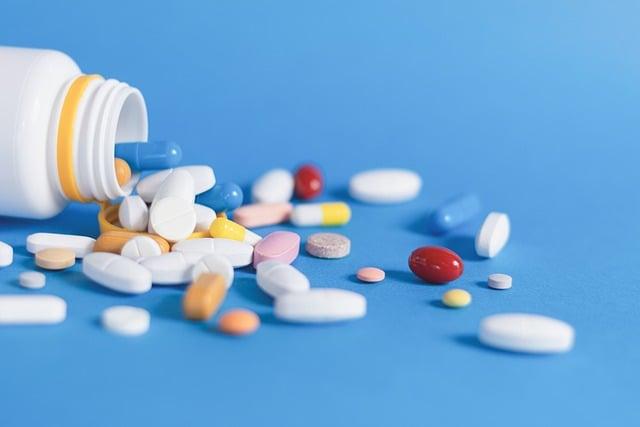Psychotropics for toddlers?
A patient healed is a customer lost.
Little Rebecca Riley was just two years old when a Boston psychiatrist diagnosed her with bipolar disorder and ADHD, prescribing her with a host of psychotropic drugs; by age four, she was dead from overmedication. Now, while Rebecca’s parents went to prison, Dr. Kayoko Kifuji never faced any serious consequences for her role in Rebecca’s death (and subsequent negligence or oversight), and as far as I can tell, is still “practicing” medicine.
This morning, a reader sent us a report from Frontline News which detailed Rebecca’s story and the subsequent 2010 criminal trials—but the piece also highlighted an aspect of the pharmaceutical-industrial-complex (PIC) that all too often escapes our attention: children dosed with psychotropic drugs.
From that Frontline item:
According to the CDC, in 2022, 9.3 percent of children aged between 5 and 17 were taking drugs for their ‘mental health.’ This translates to around five million children. As many anti-Pharma activists have pointed out, children are a very sought-after demographic for drugging, as they usually have little to no say as to whether to take the drugs or not, even when adverse events are disturbing, painful, and/or outright harmful. Furthermore, a childhood on drugs very often predicts adult life on more drugs—more of the same, plus others.
That’s a 2022 stat—I wonder where some of those kids are now? Oh I don’t know, probably LARPing around Ivy League campuses and vandalizing property as they don terrorist scarves and wave signs calling for the invocation of the Third Reich’s “final solution” strategy:
I’m in the lost and found chat for Columbia’s encampment, where a comrade is currently freaking out that their other comrades might steal their Adderall prescription. pic.twitter.com/U9oQJLgrq4
— Olivia Reingold (@Olivia_Reingold) April 26, 2024
Psychotropics are a dangerous class of drugs, for children and adults alike—but that doesn’t matter to the people peddling them, because it means lots of cash. Here’s a new development, also from Frontline:
Who is looking out for these children? Not the FDA it seems. Just a few months ago, the FDA decided to expand its approval of an SSRI-class drug, Lexapro, to ‘treat anxiety’ in children as young as seven years old.
The authors of the clinical trial upon which the approval was based wrote that Lexapro ‘reduced anxiety symptoms and was well tolerated,’ adding that, ‘the benefits of the product outweigh the risks.’
Did children have anxiety before the Standard American Diet—complete with poisonous synthetic dyes, toxic preservatives, GMOs, pesticides, and repurposed engine lubricant—became the norm? No.
Did children have anxiety before their parents raised them as “genderless” beings? No.
Did children have anxiety when raised in a nuclear family household? No.
Did children have anxiety before they were pumped full of synthetic cross-sex hormones?
Did children have anxiety when the culture reflected objectively good and moral principles? No.
Did children get diagnosed with severe personality disorders while in toddlerhood before the modern era of Rockefeller-based medicine? No.
If you start to research links between psychotropics and homicidal/suicidal outbursts, you’ll be bombarded with “scientific” articles and mainstream reports asserting the alleged link to be a mere “myth” and a “dubious claim” unbacked by science. But expecting the industry raking in tens of billions of dollars from these drugs to conduct a fair investigation into whether or not their product is causing people to lose their minds is like believing the CIA when it says it found no link between itself and the crack cocaine trade:
Who remembers this? pic.twitter.com/WEX2e8xCR2
— Olivia Murray (@americaliv1) May 8, 2024
Here’s this, from a 2021 article on the numbers and profit forecast:
Visiongain’s lead analyst says: ‘The Global mental disorder drugs market was valued at US$ US$36.77 bn in 2020 and is projected to reach at a market value of US$58.91 billion by 2031. Rising prevalence of mental disorders; mounting investment in drug R&D by pharmaceutical & biopharmaceutical companies; growing mental health care awareness; new product launches and rising acceptance of mental disorder drugs worldwide are some of the major factors that propel the global mental disorder drugs market growth’.
We know correlation doesn’t imply causation, but it’s certainly relevant when some of the most high-profile murders (including mass shootings) are committed by kids on psychotropic drugs. Here is a fairly extensive list of examples (with drug names included), but I’ll only mention a few: Eric Harris, one of the Columbine shooters; Jeff Weise, Red Lake High School shooter; Kip Kinkel; Michael Carneal, Kentucky highschool shooter; and Pekka-Eric Auvinen, also known as The YouTube Killer.
The PIC is itself a malignant tumor, and it must be excised.
Hat tip: Marsha.

Image: Free image, Pixabay license.
FOLLOW US ON
Recent Articles
- The Death of the Center-Left in America
- ‘Make Peace, You Fools! What Else Can You Do?’
- When Nuclear Regulation Goes Awry
- The Danger of Nothing
- A New Pope With Courage
- Not in Kansas Any More
- Democrats Dying on the Most Desolate Hills
- If She’s an Astronaut … I’m a Jet Fighter Pilot
- Is the Jihadist Trojan Horse Winning?
- Who Has the Best American Autobiography?
Blog Posts
- Celebrate Earth Day by not burning a Tesla
- Minnesota state bureaucrat charged with vandalizing Teslas to the tune of $20,000 is let off scot-free
- Trump’s plan for Gaza vs. the New York Times
- What’s next for Syria?
- Tulsi Gabbard's latest Biden revelation
- Mexican ammo wranglers
- Rep. Jamie 'Maryland Man' Raskin also threatens Trump supporters
- The eight narrative fallacies that drive American politics
- Summertime reality twisted into climate exasperation
- Life discovered on a distant planet?
- The answer is not blowing in the wind
- Letitia James: it's either/or
- Harvard elitism meets Donald Trump
- The GEC is finally more than mostly dead
- We're not the same






